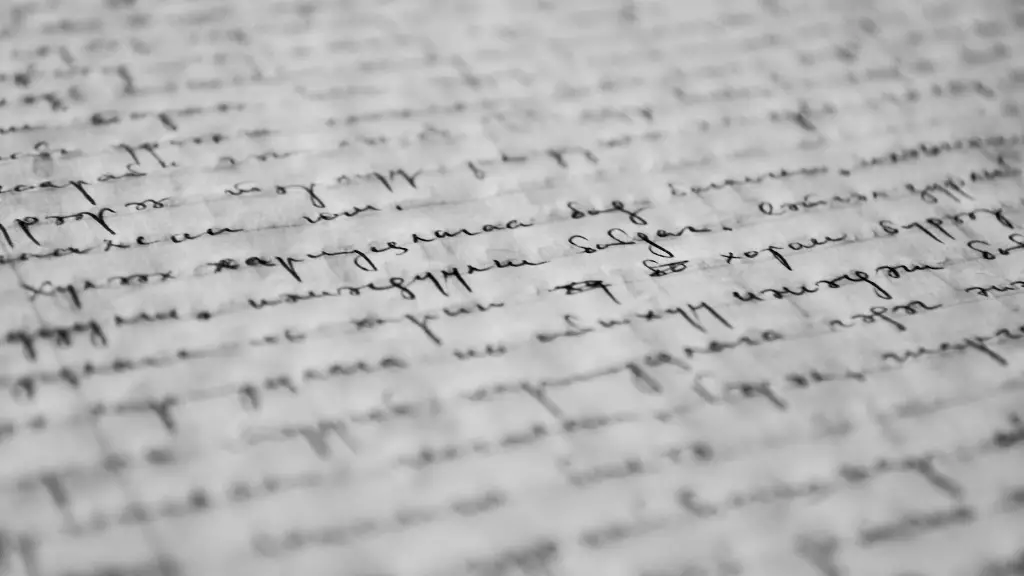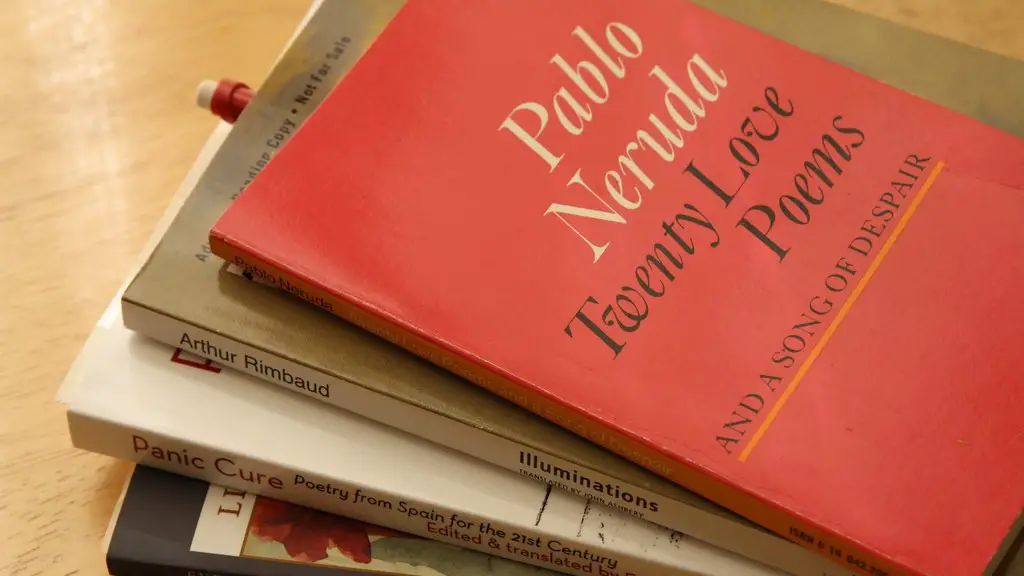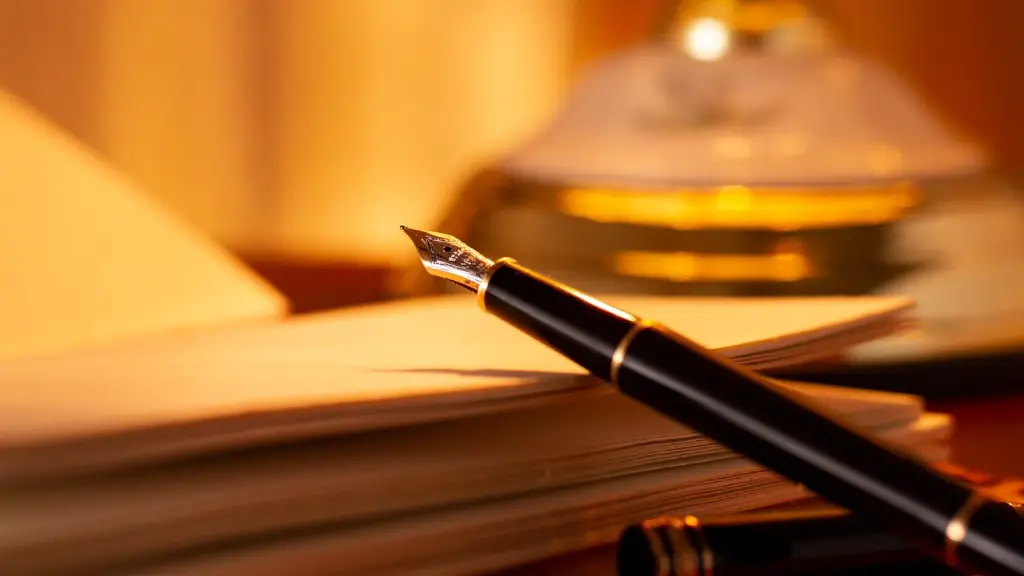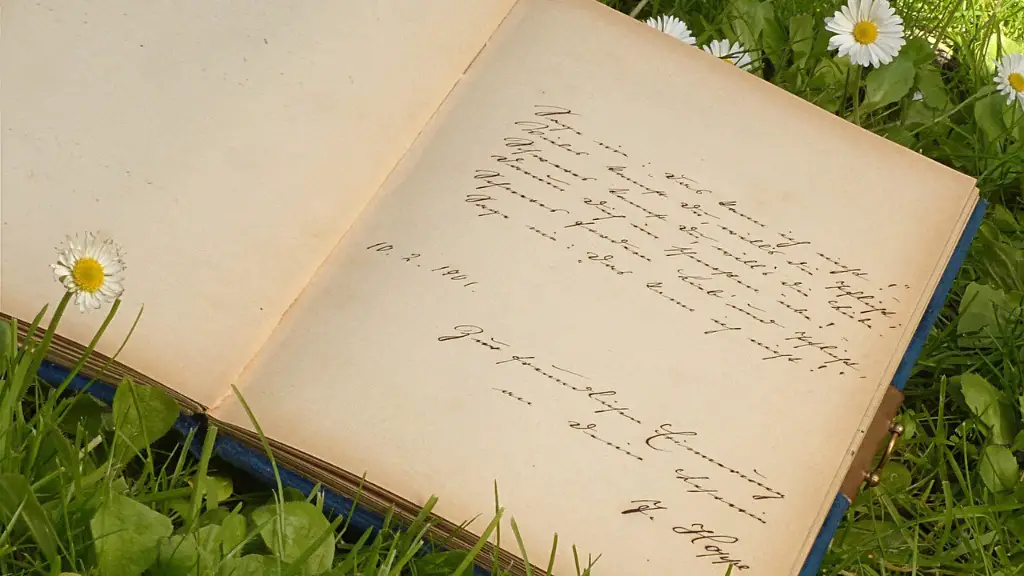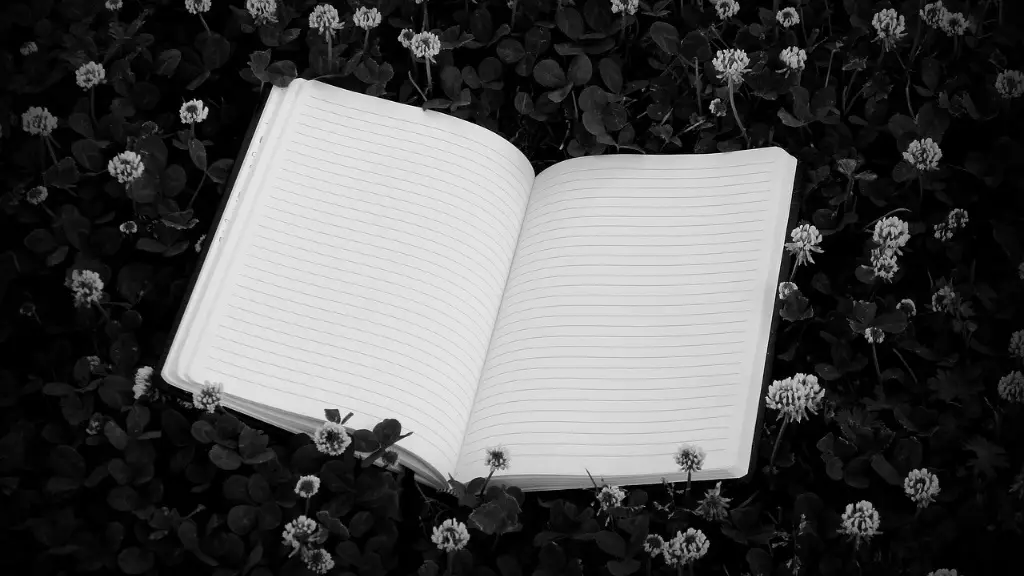Poetry is one of the few art forms that has a long and distinguished history. It is beloved by many, from the romantic couplet to the epic narrative poem. But what is its purpose? Poetry analysis can help us to understand the underlying meaning of its words. In this article, we look at what form in poetry analysis is and how it can be used to unlock the hidden meanings within a poem.
Fundamentally, exploring form in poetry analysis is all about understanding how the shape of a poem works to create meaning. It means looking closely at how each line, stanza and rhyme scheme contributes to the overall tone and structure of a piece. For example, a sonnet could have an ababcdcdefefgg rhyme scheme while a villanelle could opt for a aabbaa pattern. Each of these forms has specific implications which can further inform the analysis.
To get a better understanding for form in poetry analysis, it can be helpful to compare the style of a given poem to the styles of other poets. In this way, one can see how its structure differs from those of other authors and what the implications of those differences are. For instance, one may see that the use of imagery in a poem is much richer than in other poems. Through these comparisons, one can gain greater insights into the message the author was trying to convey.
Of course, form in poetry analysis doesn’t just refer to the structure of the poem. It can refer to the language too. This includes the use of figurative language such as metaphor, simile and allusion. Analysing figurative language helps us to go beyond the literal meaning of the text to glean deeper insights into the poem. For instance, a metaphor which compares a woman to a river could suggest that the woman has a powerful, tumultuous energy to her or that she is unpredictable.
Central to enjoying poetry is understanding when to break the rules and when to follow them. Poetry can often use unexpected forms and language to create powerful and evocative imagery. These are moments which are unique to a poem and cannot be replicated in any other form. It’s important to remember that no two poets are alike and that the structure of a poem can often be more important than the content. By looking closely at how a poem works, one can gain far greater insights into its musicality, meaning and message.
Metaphor
The use of metaphor in poetry has been recognised since antiquity as a powerful tool to add depth, emotion and nuance to a poem. It allows the reader to draw connections between two seemingly disparate objects or concepts and better understand the poem’s message. In poetry analysis, it’s important to note not just the use of metaphor but also the imagery behind it, as this can help to reveal complexities in the text that might otherwise go unnoticed.
For example, in John Donne’s poem “A Valediction Forbidding Mourning” he writes, “But we by a love, so much refined, / That our selves know not what it is, / Inter-assurèd of the mind; / Care less, eyes, lips and hands to miss.” Here, the metaphorical union of the speaker and his love is one of refinement and transcendence, implying a metaphysical union that goes beyond the physical. The imagery of missing eyes, lips and hands is a poignant reminder of the separation between two lovers. By analysing the metaphor and its imagery, we can gain greater insight into the poem’s message.
Personification
Personification is another powerful tool in poetry analysis. Personification is the act of giving human traits or qualities to inanimate objects or concepts. In this way, a poet can create vivid and emotionally-charged imagery. For instance, in “The Road Not Taken” by Robert Frost, the speaker likens the two roads he must choose from to having two lives: “Two roads diverged in a yellow wood, / And sorry I could not travel both/And be one traveller, long I stood/And looked down one as far as I could.” Here, by personifying the roads, Frost has created a powerful and relatable image of indecision and regret.
Personification can also be used to great effect to convey a mood or emotion in the poem. In TS Eliot’s “The Love Song of J. Alfred Prufrock” the speaker personifies himself as an unhappy, aging figure: “I am no prophet—and here’s no great matter;/I have seen the moment of my greatness flicker,/And I have seen the eternal Footman hold my coat, and snicker.” The image of the Footman holding his coat and snickering stands in stark contrast to the image of the young and powerful prophet implicit in the poem, and serves to emphasise the sense of disillusionment and loneliness that characterises the poem.
Music
Exploring form in poetry analysis also means looking closely at the use of music in a poem. This includes the use of rhythm, alliteration, assonance and rhyme. Through exploring these aspects, one can gain greater insight into the overall tone, mood and meaning of a poem. For instance, in Walt Whitman’s “Song of Myself” he writes, “I bequeath myself to the dirt to grow from the grass I love,/If you want me again look for me under your boot-soles.” The rhythm and rhyme of this line creates a humorous and light-hearted tone that contrasts with the melancholy subtext of mortality.
Analysing the music of a poem can also provide insight into its form. Walt Whitman’s poem “Song of Myself” is written in free verse which has no regular rhyme and metre scheme. This gives the poem a raw, informal quality which works to emphasise the speaker’s voice. By exploring the music of the poem, we can see how this choice of form works to convey the speaker’s emotions.
Symbolism
Symbolism is another important aspect of form in poetry analysis. Symbolism is the use of symbols to illustrate ideas and emotions. For instance, in William Butler Yeats’ poem “The Second Coming” he writes, “Things fall apart; the centre cannot hold/Mere anarchy is loosed upon the world.” Here, the phrase “the centre cannot hold” is symbolic of the looming chaos and anarchy which is alluded to in the poem. By exploring the symbols used, one can gain greater insights into the poem’s meaning and message.
Symbolism can also be used to explore the tone of a poem. In TS Eliot’s “The Waste Land” he creates a sense of doom and despair by using references to myth and legend. Moreover, the poem is structured around the journey of a character referred to as “The Fisher King”. This symbolises the protagonist’s own journey from despair to spiritual enlightenment, and allows us to gain greater insight into the themes of the poem.
Imagery
Imagery is the most powerful tool in poetry analysis. Through studying the imagery used in a poem, one can gain an understanding of its underlying meaning. For instance, in Wilfred Owen’s poem “Dulce et Decorum Est” the poem is filled with images of the horrors of war: “Gas! GAS! Quick, boys! An ecstasy of fumbling,/Fitting the clumsy helmets just in time.” Here, Owen has used a vivid image to convey the panic and confusion that accompanies war.
Imagery can also be used to explore the themes of a poem. For example, in Emily Dickinson’s “I’m Nobody! Who Are You?” she uses imagery to illustrate the idea of being an individual in a hostile and alienated world: “How public like a frog/To tell one’s name the livelong June/To an admiring Bog!” Here, the frog stands as a metaphor for the outcast speaker in a world which neither understands nor appreciates her identity.
Structure
Finally, it’s important to consider the structure of a poem in poetry analysis. Structural elements such as line length, punctuation and enjambment can all provide greater insight into the meaning of a poem. For instance, the structure of a haiku can suggest a certain type of atmosphere or feeling, whereas the structure of a sonnet can suggest a certain level of formality and emotion.
In Sylvia Plath’s poem “Daddy”, the poem is structured as a series of stark and emotionally charged statements. This serves to create a sense of intensity and urgency in the poem. Moreover, the use of short, choppy sentences aids the reader in understanding the intensity of the speaker’s emotions. Through studying the structure of the poem, we can gain greater insights into the underlying meaning of the poem.
Rhetoric
Rhetoric is also an important aspect of form in poetry analysis. Rhetoric refers to the techniques and strategies used to communicate a message or emotion. For instance, in William Wordsworth’s “Composed Upon Westminster Bridge” he uses rhetorical questions to create a sense of awe and wonder in the reader: “Dear God! The very houses seem asleep;/And all that mighty heart is lying still!” Here, the use of rhetorical questions works to emphasise the tranquillity of the scene.
Rhetoric can also be used to explore the tone of a poem. In Robert Frost’s “Mending Wall” he uses irony and satire to explore the relationships between humans and nature: “Good fences make good neighbours.” Here, Frost is using irony to suggest that walls are a barrier, not a bridge, between individuals and nature. Through analysis of the rhetoric in this poem, one can gain greater insight into the theme of the poem.
Narrative
Narrative is also an important part of form in poetry analysis. Narrative is the telling of a story, and can be used to convey a certain message or theme. In Walt Whitman’s “Song of Myself” he tells a series of stories that allude to a certain theme of connectedness and unity between all individuals: “I bequeath myself to the dirt to grow from the grass I love,/If you want me again look for me under your boot-soles.” Here, Whitman is suggesting that even though there may be physical or geographic barriers between individuals, there is still a strong sense of inner unity.
Narrative can also be used to explore the form of a poem. For example, the poem “The Rime of the Ancient Mariner” by Samuel Taylor Coleridge follows the traditional structure of an epic poem: a journey across physical and metaphysical realms, featuring a hero and featuring moral lessons. By analysing the narrative structure of the poem, one can gain greater insight into its themes and message.
Conclusion
Exploring form in poetry analysis is an invaluable tool in unlocking the hidden meanings within a poem. By looking closely at the structure, language, music and imagery of a poem, one can gain far greater insight into the message of the author. Moreover, by analysing the poem in comparison to other authors, one can better understand how its form works to convey its underlying meaning.
